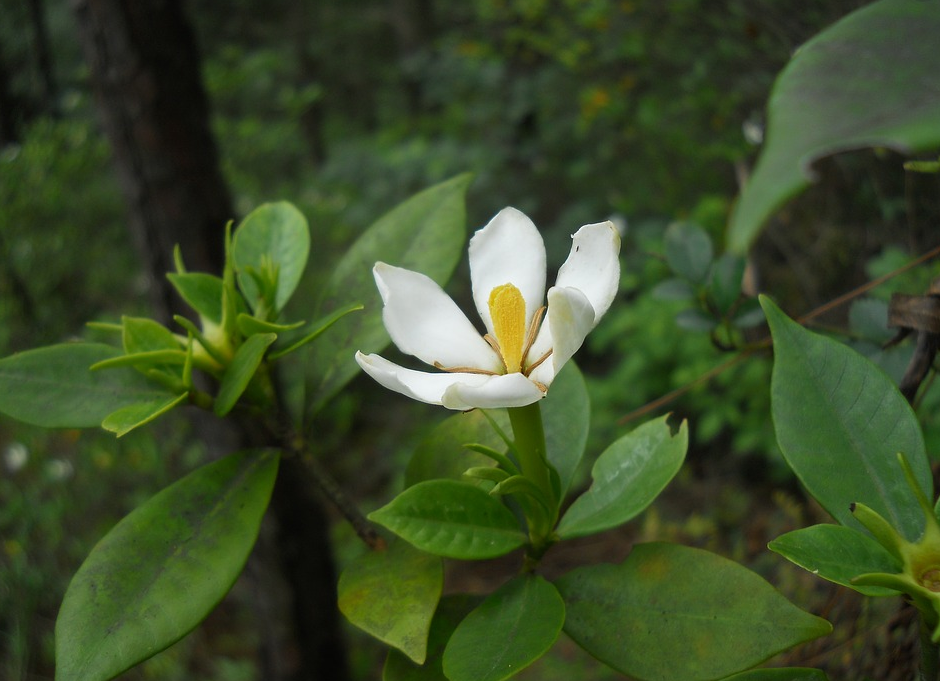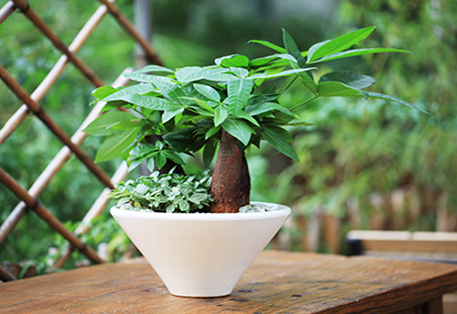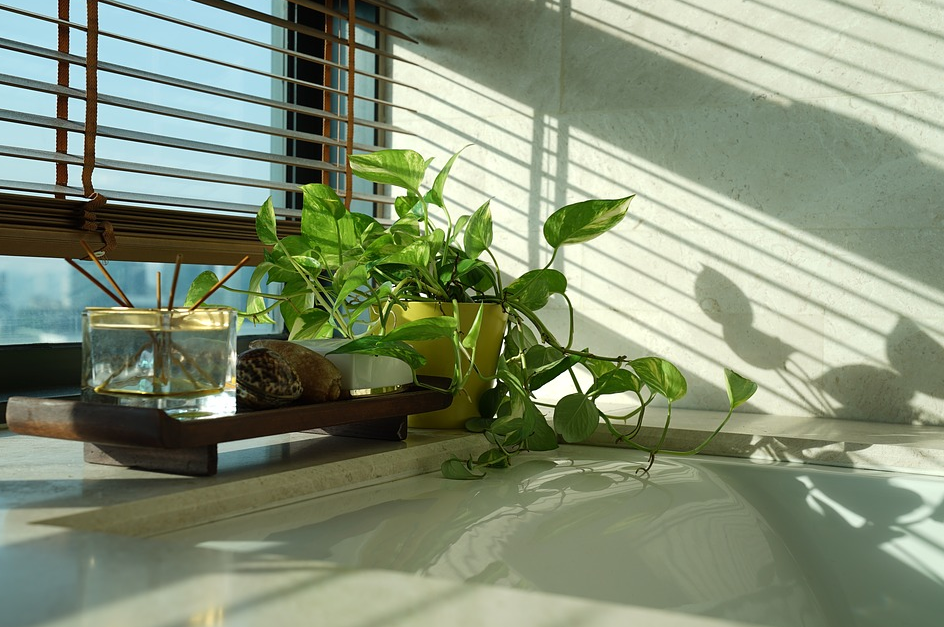How is the leaf of gardenia yellowing to return a responsibility? What shall I do? How to maintain it?
Gardenia leaves are evergreen all the year round, flowers are fragrant and elegant, green leaves and white flowers are particularly beautiful and lovely. It is suitable for front steps, poolside and roadside configurations, can also be used as hedges and potted plants to watch, flowers can also be used for flower arrangement and wear decoration. Gardenia is a popular potted plant, many people like to plant a pot at home, and they will soon find that the leaves of gardenia are yellowing, so how is the leaf yellowing of gardenia? What shall I do? How to maintain it?

I. the reason for the yellowing of gardenia leaves
1. Improper moisture
If the water is not enough at ordinary times, it is possible to make it produce yellow leaves. In addition, watering should not be too much in the process of planting. Stagnant water or soil in the basin is too wet, which will cause young leaves to be dim, grow slowly, and old leaves show yellowish green and wither gradually.
two。 Improper lighting
Too much light or too much light will cause the leaves of the plant to turn yellow. If the strong light is direct for a long time, there will be macula on the leaf surface, but if it is placed in a shady environment for a long time, the leaves will fall off because they do not get enough sunlight, so they should replenish the light in time.
3. Improper fertilization
In the process of gardenia planting, fertilization concentration will cause plant yellowing, the tip of new leaves will be yellowish brown, the leaves will be uneven and glossy, and the old leaves will wither and fall off gradually. At this time, you need to replenish the fertilizer in time, but before that, you need to judge which fertilizer should be added according to the performance of the plant, as follows:
Nitrogen deficiency: plant nitrogen deficiency simple leaves yellowing, new leaves small and brittle.
Potassium deficiency: when plants lack potassium, the old leaves change from green to brown.
Iron deficiency: at the beginning, the leaves are yellowish or white, the veins are still green, and in severe cases, the veins are also yellow or white, and finally the leaves dry up and die.
Magnesium deficiency: yellowing gradually develops from old leaves to new leaves, and the veins are still green. When the leaves are serious, the leaves fall off and die. ⑤ phosphorus deficiency: the old leaves were purplish red or dark red.
4. The temperature is too low
Gardenia jasminoides can tolerate low temperature, but too low temperature will cause leaf yellowing. In the process of gardenia maintenance, it is easy to frostbite in winter, and it is easy to frostbite plants if warm measures are not taken in early spring and early winter night.
2. treatment of yellowing leaves of Gardenia jasminoides
1. Slowly adapt to the environment
Most of the gardenia just bought back from the market are taken out from the greenhouse, and it takes a period of adaptation to change to the new environment. If the environmental difference is too large, it will cause yellow leaves, which is out of control at this time. Therefore, the leaves yellowing first observe for a period of time, during this period of good maintenance.
two。 Rational watering
If there is a shortage of water, replenish it in time, and if you usually water too much, reduce the frequency and amount of watering.
3. Acidic water is more suitable.
Gardenia likes acidic soil, and the tap water is alkaline or neutral, so some acidic substances are often added when watering, such as edible vinegar and citric acid.
4. Window ventilation
Indoor maintenance of gardenia needs regular ventilation to ensure that the environment is bright, put the plant on the window for maintenance.
5. adequate manuring
Supplement fertilizer appropriately according to the growth state of the plant to ensure the balance of each nutrient. If you fertilize too much, immediately water and rinse, or turn the basin to change the soil.
6. Prune yellow leaves
Gardenia woody stem, when there are yellow leaves, directly cut off the yellowed branches, can ensure the normal growth of the trunk, careful maintenance, soon, grow new leaves.
Third, how to maintain gardenia
1. Basin soil
Gardenia likes acidic soil, and the suitable pH value is 5 to 6. Prepare suitable soil before planting. If the pH of the soil is not suitable, the maintenance after that is very troublesome.
Cultivation soil usually choose rotten leaf soil, peat soil plus half of the garden soil, do not use cinder, or directly buy gardenia special soil, convenient and practical.
two。 Fertilizer application
Gardenia likes fertilizer, and rotten cake fertilizer is added to the soil as base fertilizer when planting.
Cake fertilizer and ferrous sulfate are used to make fertilizer and water in the growing season and irrigated once a week. Fully nutritious organic liquid fertilizer can also be used.
Topdressing for 1-2 times at budding stage and watering the aqueous solution of potassium dihydrogen phosphate can make the flowers fat and fragrant.
The temperature is above 35 ℃ in summer and 15 ℃ in autumn, and fertilizer application is stopped.
3. Watering
Gardenia likes a moist environment. During the growing period from April to September, keep the basin soil moist, water dry and wet, and spray the leaves at night to maintain humidity. If the plant grows too fast, don't water it at night. Water it when the sun comes out in the morning.
In the northern alkali water area, when watering, the tap water will be watered after one day. For 3-5 days, pour a little citric acid solution to keep the leaves green.
4. Light
The growth of gardenia needs plenty of sunlight, if placed in the semi-shade for a long time, the flower branches are thin and slender. During maintenance, in addition to the need for shade at noon in July and August and hibernation in winter, you can be maintained in the sun at other times.
5. Matters needing attention
(1) pest control. Gardenia is more prone to chlorosis, leaf spot and scale insects, especially in flowering summer, the weather is hot and humid, fungal infection leads to diseases and insect pests. After the discovery, spray disinfection in time, isolate from other plants, and avoid infection.
(2) soil acidification. Gardenia likes fat, but is afraid of thick fat. During the growing period, the rotten cake fertilizer and water should be applied every half a month, and the concentration should be low, so as not to burn roots and affect the growth of flower buds. At the same time, it is necessary to pay attention to acidifying the soil in time. Most of the water in the home is alkaline, long-term watering will lead to soil alkalization, timely irrigation of ferrous sulfate solution, change the acidity and basicity of the soil, can promote plant growth.
(3) dormancy in winter. Although gardenia is cold-tolerant, the root system of potted gardenia will be damaged after severe winter and recover slowly in spring. But in the room with heating, the temperature is higher, the light is insufficient, the plant growth slows down, and the flowering is later in the second year. The best way is to put the potted plant in a 5 ℃ environment to hibernate, or wrap the flowerpot with thermal insulation material and put it outside in the sunny leeward to survive the winter.
(4) proper pruning. When the trunk of Gardenia jasminoides grows to 20 cm, hit the top, leaving 3-4 branches to promote branches. After flowering every year, prune lightly and cut off weak and diseased branches. But gardenia can not be cut short in spring, otherwise it will be difficult to blossom in that year. (recommended by editor: how to trim gardenia?)
(5) change the basin soil at the right time. Gardenia is full of vitality, and the seedlings grow from a few centimeters to dozens of centimeters, so the pot should be changed according to the size of the plant. When the branch length of the plant is 2 to 3 times the diameter of the flowerpot, the pot needs to be changed. When changing the basin, trim the old root in time, change half of the soil, pour water, put it in the semi-shade for a week, grow new buds and move it to the sun.
Time: 2019-04-05 Click:
- Prev

How is the leaf of the rich tree yellow to return a responsibility? What shall I do? How to prevent it?
The rich tree is a popular potted plant, which not only represents getting rich, but also a natural air purifier, which can fight against the exhaust gas produced by tobacco burning, and is an important household furnishings. Many people like to put a pot in their home, only to find that the leaves turn yellow soon.
- Next

Planting skills: causes and treatment methods of rotten roots of green pineapple
Green pineapple is a negative plant, like scattered light, more shade-tolerant. It is called the flower of life because of its tenacious vitality. The following are the cultivation techniques of green pineapple: the causes and treatment methods of rotten roots. The reason for the rotten root of green apple, 1. If the temperature is too low, the green pineapple is a heat-loving plant, and the most suitable growth is 15 ~ 25 ℃.
Related
- Fuxing push coffee new agricultural production and marketing class: lack of small-scale processing plants
- Jujube rice field leisure farm deep ploughing Yilan for five years to create a space for organic food and play
- Nongyu Farm-A trial of organic papaya for brave women with advanced technology
- Four points for attention in the prevention and control of diseases and insect pests of edible fungi
- How to add nutrient solution to Edible Fungi
- Is there any good way to control edible fungus mites?
- Open Inoculation Technology of Edible Fungi
- Is there any clever way to use fertilizer for edible fungus in winter?
- What agents are used to kill the pathogens of edible fungi in the mushroom shed?
- Rapid drying of Edible Fungi

